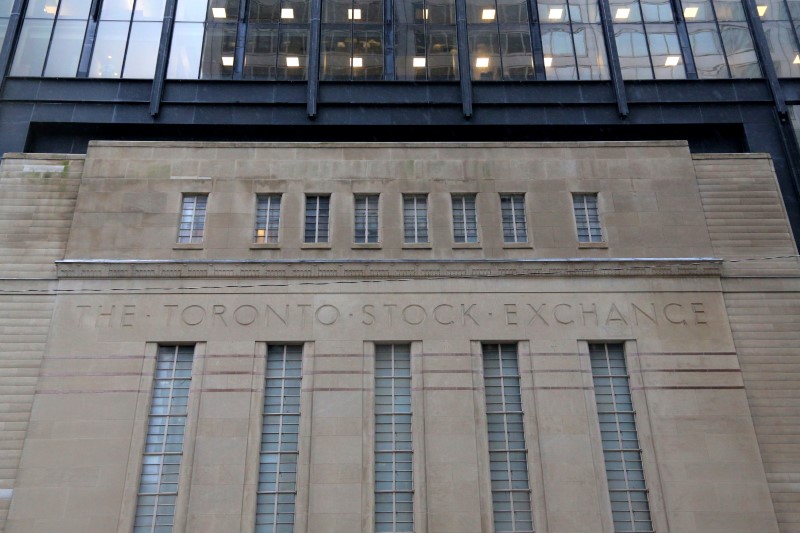Qantas shares slide to 6-mth low as airline trims revenue outlook
Investing.com - Canada’s main stock exchange ended lower on Friday sinking to a one-week low.
The S&P/TSX composite index shed 419 or 1.38% at 29,850.89
Index fell by 0.8% to end at 30,269.98 on Thursday, its lowest closing level since last Thursday and the largest one-day drop since early August.
Investors are now keeping tabs on Canada’s employment report for September, which is set to be unveiled later today. Analysts anticipate that the reading will show that 5,000 roles were added last month, while the unemployment is tipped to inch up to 7.2%.
How the numbers shake out may influence an upcoming monetary policy decision from the Bank of Canada on October 29. At its previous meeting, the BoC slashed rates for the first time since March in a bid to bolster the wider economy.
U.S. stocks slide
Elsewhere, U.S. stocks fell as investors looked ahead to a monthly survey of consumer sentiment and assessed the trajectory of soaring enthusiasm around artificial intelligence.
At 4:00 p.m. ET (20:00 GMT), the benchmark S&P 500 fell 2.7%, the tech-heavy Nasdaq Composite fell 3.6%, and the blue-chip Dow Jones Industrial Average fell 840 points, or 1.9%.
The main averages on Wall Street fell on Thursday, as investors weighed the implications of an ongoing U.S. government shutdown against the continued AI euphoria. Market observers have begun to flag worries over the circular nature of recent AI dealmaking, although some analysts have argued that investors’ fear of missing out on further advances in the boom have kept the rally intact.
University of Michigan survey ahead
The economic calendar has been largely quiet, with the federal government shutdown delaying the release of key official indicators.
Should lawmakers in Washington fail to resolve a now more than week-old standoff, more numbers could be postponed, namely crucial U.S. inflation data next week. Media reports have said the Bureau of Labor Statistics, the agency responsible for putting together the inflation figures, is planning to bring back furloughed workers to get the report out, although the exact date when it would be published was unclear.
A lack of fresh trackers of prices and job growth has particularly complicated how the Federal Reserve plans to approach future interest rate decisions. The central bank slashed rates by 25 basis points last month and signaled that it could roll out further drawdowns this year, but without up-to-date data, the timing and scope of these moves remains murky.
Instead, policymakers have turned to secondary or alternative sources of information. One such gauge, a survey of consumer sentiment and inflation expectations from the University of Michigan, is due out on Friday.
Applied Digital earnings
Shares of Applied Digital surged by more than 22% in premarket trading, after the data center services provider posted better-than-anticipated fiscal first-quarter revenue.
Demand for data centers has skyrocketed as more businesses race to snap up the computing power needed to fuel their AI capabilities.
In August, Applied Digital notched a new lease agreement with AI-related group CoreWeave, while analysts have suggested that the firm may secure additional deals before the end of 2025.
For the quarter ended on August 31, revenue grew by 84% to $64.2 million, surpassing Wall Street estimates of $50 million, according to LSEG data cited by Reuters. Applied Digital’s per-share loss of $0.03 was also smaller than anticipated.
Levi Strauss lifts full-year guidance
Levi Strauss & Co raised its full-year revenue and profit forecast as it reported a strong quarterly result, helped by solid demand for its denim offerings and strong direct-to-consumer sales.
The jeans maker reported third-quarter earnings of $0.34 per share, beating analysts’ average estimate of $0.30 a piece. Revenue rose to $1.54 billion from $1.50 billion a year earlier, also above expectations.
Levi said it now expects fiscal 2025 adjusted earnings of $1.27 to $1.32 per share, compared with its prior view of $1.25 to $1.30.
Its outlook for reported net revenue growth was also increased to about 3% from a prior range of 1% to 2%, and organic growth to roughly 6% from 4.5% to 5.5%.
But shares tumbled by over 6% premarket. Analysts at Vital Knowledge said that while the firm "continues to execute very well in a touch macro environment," expectations were "fairly high" going in to the results, "which might explain some of the knee-jerk disappointment."
Gold steadies after falling below $4000
Gold inched higher in volatile trading, after improving risk appetite, off the back of an Israel-Hamas ceasefire, spurred a bout of profit-taking that pushed the metal below the $4,000-an-ounce level.
The deal, which was brokered by U.S. President Donald Trump, was approved by Israel’s government on Friday, and may clear the way for the stoppage in the two-year old war in Gaza. Easing geopolitical tensions could diminish some of the allure of gold, which is traditionally viewed as a safe haven during times of economic or political uncertainty.
Bullion prices logged steep overnight losses, with strength in the dollar also weighing on wider metal prices. Emerging doubts over the trajectory of U.S. interest rates, coupled with a slide in the Japanese yen and the euro, have supported the greenback this week.
Spot gold had edged up by 0.5% to $3,996.51 an ounce, while gold futures for December rose 1.0% to $4,010.57/oz by 06:27 ET. Spot prices exceeded $4,000/oz for the first time ever this week.
Meanwhile, oil prices dropped, extending losses from the prior session, as the Israel-Hamas news hit the market’s risk premium.
Brent crude futures were down by 1.2% to $64.43 per barrel and U.S. West Texas Intermediate crude had fallen 1.2% to $60.76 a barrel by 06:28 ET.
